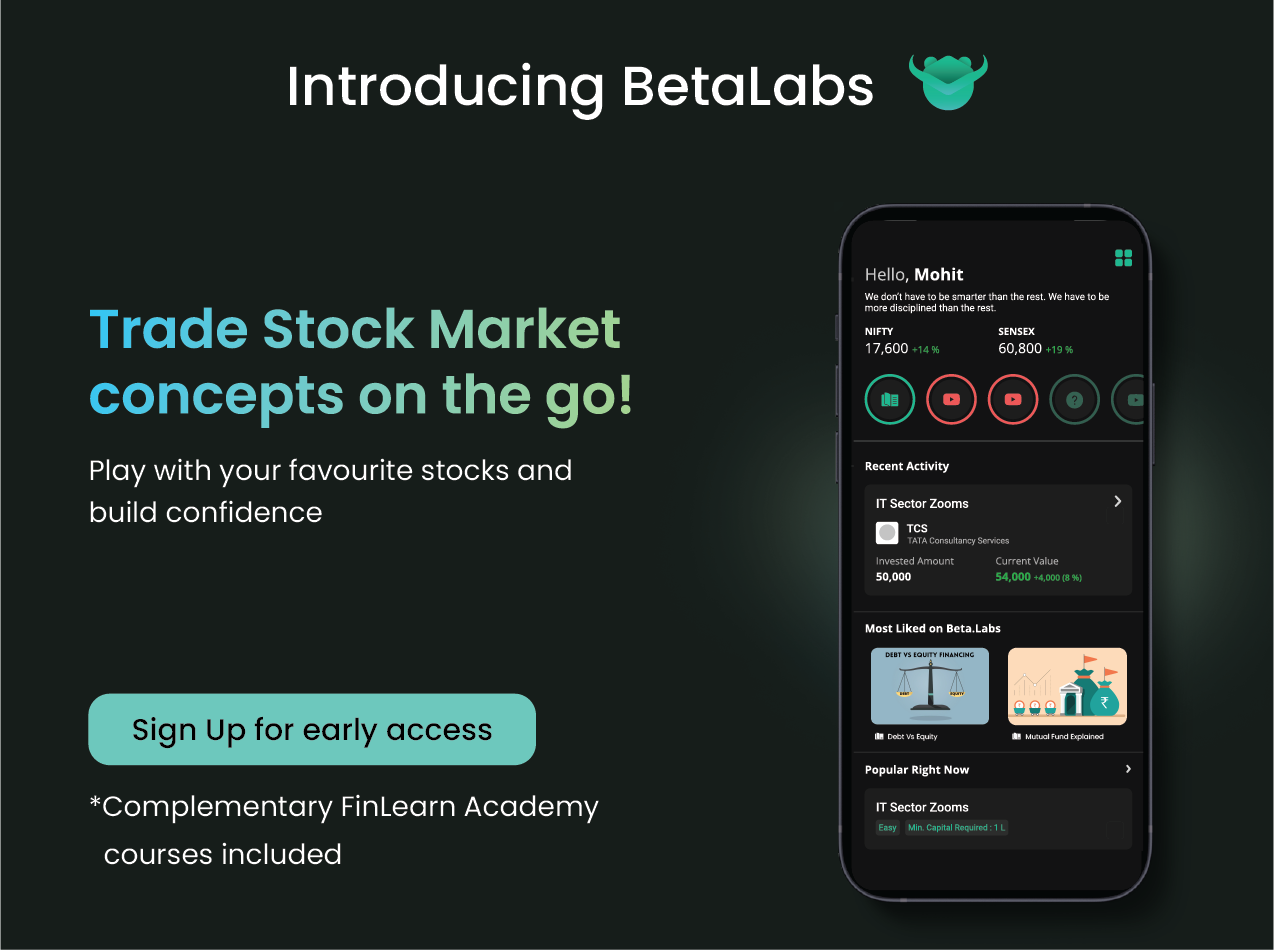
15-Minute Delivery Gets A Reality Check
Good Morning Toasters!
In today’s issue of the Morning Toast, we discuss:
- Inflation continues upward trajectory
- 15-Minute ultra-fast delivery gets a reality check?
- News around the world
- An educational concept to keep you learning every day 🙂
Market Watch
Nifty: 17,475.65 | -54.65 (-0.31%)
FII Net Sold: INR 2,061.04 crore
Sensex: 58,338.93 | -237.44 (-0.41%)
DII Net Bought: INR 1,410.85 crore
Economy News
Inflation continues upward trajectory; what’s up and what do you need to know?
- CPI inflation surged to 6.95% in Mar’22, surpassing expectations; inflation has now crossed the RBI’s tolerance threshold of 6% for the third straight month
- Food inflation largely drove the spike, with rural food inflation topping at 8%, compounded by higher prices of edible oils & supply chain dependent items (meat, fish, fruits & milk) leading the way
- Energy inflation figure of 7.5% indicates an incomplete pass-through of the global oil pain, which likely points to further energy price hikes in the short term
- Mandi prices (local food markets in rural regions) show stable vegetable prices for the month of April, and yet with summer months upon us, prices are expected to rise, given seasonality and increase in transportation costs
Damn! Do I want to know more? (😂)
- Core Inflation (doesn’t include food, oil & intoxicants) inched up further to ~6.6% from 6.05%, reflecting an impact of the pass through of input (commodity) and higher transportation costs
- The personal care & effects category, which includes gold, silver contributed the most, with T&C (add full form) still to full pass on cost pressures to consumers (Uber prices don’t fully reflect surging gas prices)
- Core Inflation is expected to build momentum, as firms periodically pass on commodity input cost pressures (see commentary from FMCG, Healthcare firms), with a 6% print likely in the coming months (source: Emkay Global)
- IIP (Index of Industrial Input, which captures growth rates of different industries) grew by a meagre 1.7% in Feb’22, despite a low base; output was back to slightly below pre-covid levels, reflecting commodity supply disruptions impacting industry wide growth
Okay! Kindly conclude ASAP pls 🙄
- The March’22 inflation print exceeded the RBI threshold materially (6.95 > 6%), and with the expectation of the next two quarters to exceed the 6% print, the RBI may be required to act sooner rather than later (😞)
- Food prices are expected to increase (seasonality et al.), and with Input cost pressures showing no signs of abating, FY23 inflation forecasts across Bloomberg consensus have now edged to the 6% market (from mid 5% previously)
- The RBI in its recent Monetary Policy Committee results indicated a shift of targets, from growth to managing inflation; with such readings of inflation, the RBI may act sooner rather than later
- This indicates a hike in June (instead of the August cycle), with the RBI following the Fed in raising rates by 1% during FY23 (potentially), which will likely significantly impact the flow of capital to the markets, while affecting growth mood/sentiment
If you’re interested in financial news & analysis, and wish to receive this email in your mailbox consistently, click here to Subscribe Now
Around the World 🌎
- Banks’ bull run over – After outperforming the market over the course of the pandemic, the KBW Nasdaq Bank Index is down ~ 9% so far this year as they report their falling first-quarter profit expectations (new expectations are 36% lower than last year) Banks also have billions in exposure to Russia and shutting down operations there will definitely cause a hit. The volume of IPOs fell causing a hit on IB revenues (still above pre pandemic levels, however) while the bond market also performed its worst in decades with the only hope coming from commodity trading
- GM ahead of the EV curve – General Motors has finalized a multi year deal with commodities dealer Glencore PLC to secure cobalt in the wake of rising commodity prices. Cobalt is a key battery ingredient for electric vehicle manufacturing. Battery-grade cobalt prices are now at 3x compared to the end of 2019 with other key components like Nickel sulfate gaining 85% and lithium carbonate 670%. Most car companies were equipped to boost sales aggressively for their EVs but are facing increasing resistance from rising commodity prices
- US Inflation at its peak – U.S inflation surged to a whopping 8.5% in Mar’22 reaching its highest in over four decades with the main factors being skyrocketing energy and food costs, supply constraints and strong consumer demand. The Fed is yet to make some major changes even though its target inflation is 2%. The ongoing Ukraine-Russia war, and rising Covid cases in China are not aiding the situation at all. Wages on the other hand are growing too slow to offset this inflation. The Fed will most likely raise interest rates to prioritise inflation control over growth support
Global Tech News
15-Minute ultra-fast delivery gets a reality check?
Background
- Venture capitalists poured ~USD 9.2 Bn into rapid-delivery companies globally in 2021 according to Pitchbook, with the aim to acquire customers via being faster (in delivery terms) and offering the greatest discounts (sound familiar?)
- Discounts are the bread & butter –
- Three of the biggest startups were offering French customers discounts more than half the time; Getir, an Istanbul based co. discounted 86% of their orders in France
- Philadelphia based Gopuff knocked down 70% of the price on their orders, with the # touching 31% for the whole US
- Berlin-based Gorillas discounted 51% of their orders
- Likewise, even more than differentiating on price, companies have aimed to build an edge based on the speed of delivery, often advertising 15-minute delivery windows/promises (sound familiar again?)
- New York based Jokr, has indicated the customers stick around for longer if it guarantees (& delivers relatively) the promise of 15-minute delivery times
Reality Check in-coming?
- Fulfilling these promises is an expensive affair (you don’t say), with the rapid-delivery model requiring cos. to maintain small distribution centres to keep inventory close to customers
- Likewise, unlike ride-hailing & restaurant delivery companies that rely on delivery partners being off-rolls, hyper-local delivery on-boards partners in-order to own the entire process, and accordingly maintain time, thus increasing costs
- In an industry where losing money is the standard, access to capital is key to success, with changing macroeconomic conditions now severely hampering co. ability to continue offering the same services –
- Getir raised USD 800 Mn in March, unsuccessful in their attempt to raise USD 1 Bn
- GoPuff which recently laid off 100s of workers is now in the market for a debt fund-raise of USD 1 Bn
- Smaller cos including Fridge No More, 1520 and Buyk have all shut shop in the last few months, with unit economics unsustainable without significant capital in the bank
- Investor enthusiasm has significantly waned, especially looking at the public performance of delivery companies like Deliveroo, Delivery Hero, DoorDash and others
- Companies have also changed tract & messaging, moving away from promising deliveries in under 15 minutes
And India isn’t too far from this as well
- India has its fair share of ultra-fast delivery startups (think: Zepto, Swiggy Instamart, Zomato Insta, BigBasket BB Now) who have tried either through acquisition or organic business building to create similar products
- And in a similar vein, Indian companies have struggled recently, with Blinkit ultimately failing to raise capital, and being acquired in an all share deal by Zomato (who had initially invested USD 100 Bn)
- Zepto was the initial proponent of this product, running hyper-local warehouses, maintaining high-order items inventory and delivering products in under 15 minutes, while raising capital at a significant pace
- To add more sauce to the curry, Zomato recently announced plans to pilot and scale 10-Minute food delivery to customers in Bangalore, aiming to differentiate via speed of delivery
- Looking at the changing macroeconomic condition, and taking a cue from global platforms with similar businesses, the ability to continuously burn capital in the name of customer acquisition is bound to have a gestation period (we believe), which will ultimately decide the industry’s ability to continue on the current path
What else caught our eye? 👀
GoI is a man of their word
- The gov’s public sector brownfield assets have generated revenues and investments totaling Rs. 1 trillion exceeding their target for FY22 by 12%
- Major contributing sectors were coal and mineral mining, highway stretches and power transmission lines while the railway sector underperformed
- The target for the year is Rs. 1.62 trillion with the idea of crowding in private investments in infrastructure by making matching public funds available
BSE, NSE have to face the consequences
- The SEBI has imposed a penalty of Rs. 2 Cr on the BSE, and Rs. 3 Cr on the NSE for a lax approach in detecting the misuse of client securities by Karvy Stock Broking Ltd
- Karvy allegedly transferred Rs. 2300 Cr belonging to clients to its own Demat account, and used it to raise Rs. 850 from various entities
- The incident has brought to light the gaps in the information reconciliation by market infrastructure institutes (MIIs)
Educational Topic of the day
No-Load Fund
A no-load fund is a type of mutual fund where shares are bought and sold without commission charges for the purchase or the sale being taken out of the investor’s funds.
The sales charges are called the “load”, and no-load mutual funds, as the name would imply, offer investors a fund option without such fees.
Edited by Raunak Karwa
Let’s connect, I always love hearing from you. Hit me up at Raunak_Karwa on Twitter or Raunak.karwa@finlearnacademy.com









